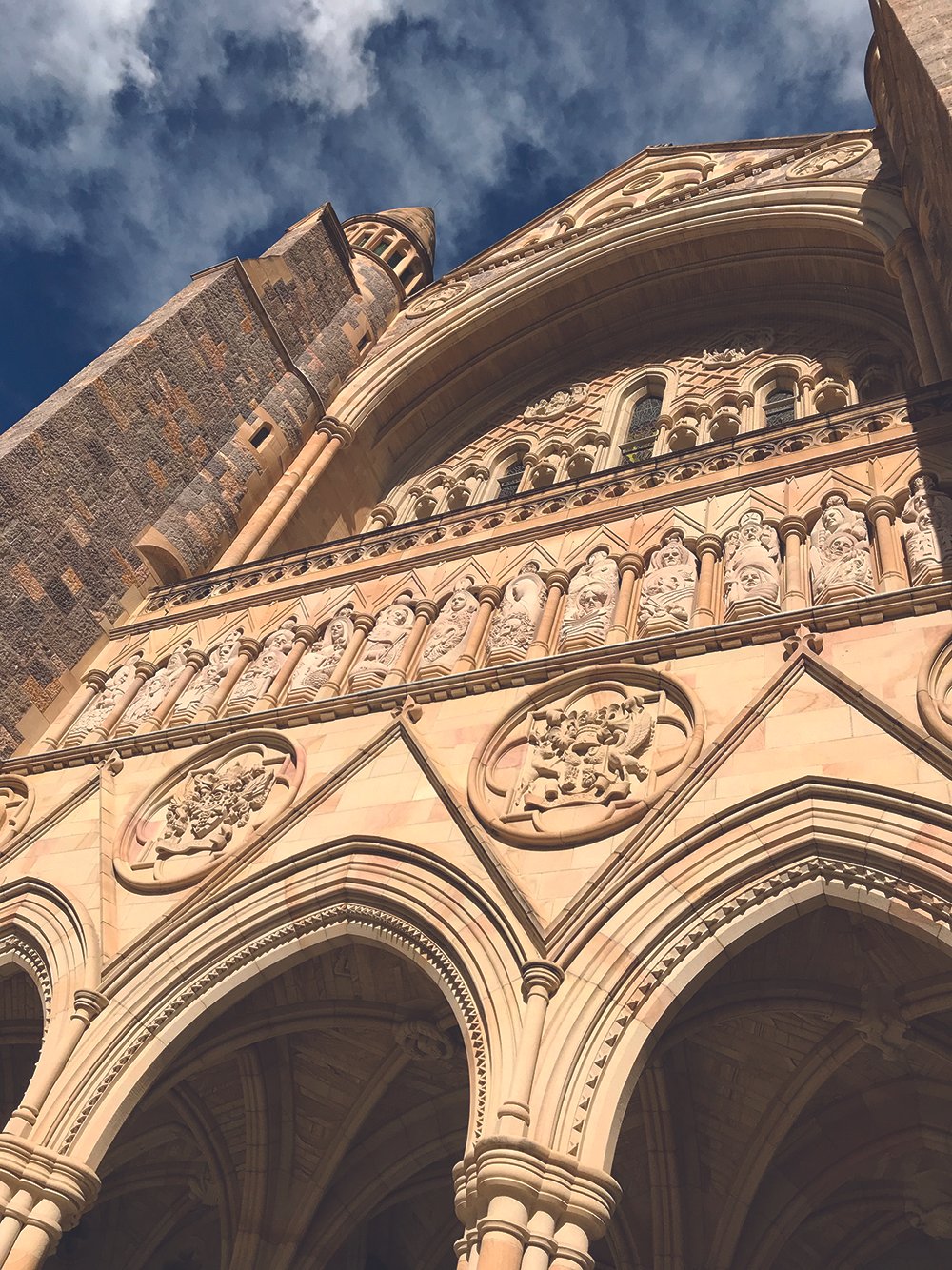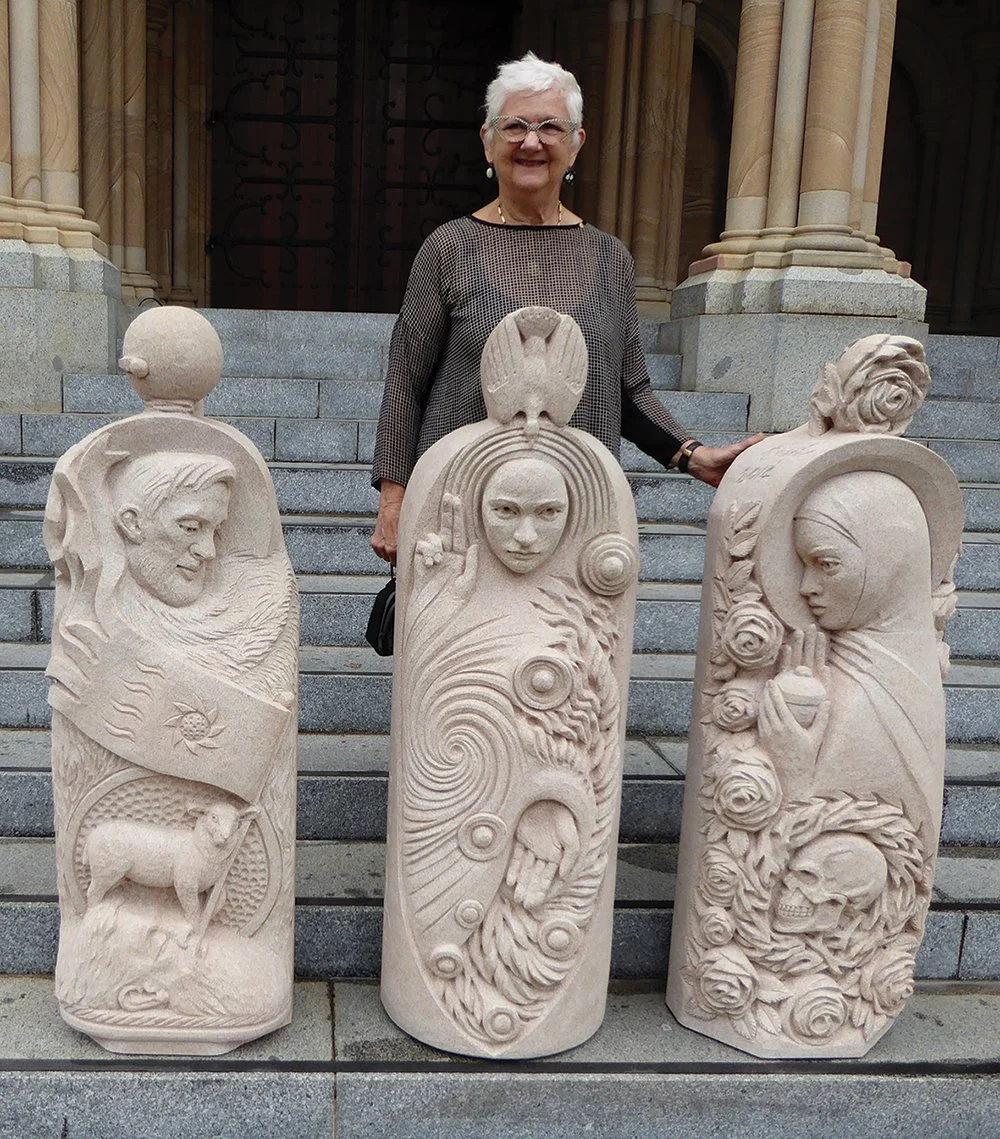Rhyl Hinwood | A Legacy in Stone
Rhyl Hinwood © University of Qld Media
Sculptor Rhyl Hinwood has designed more than seven hundred commissioned public artworks with her most demanding work being the recent design of 24 statues for the 13 niches on the west end of St John’s Anglican Cathedral in Brisbane (the last Neo-Gothic cathedral built in the southern hemisphere).
Inspired by Westminster Abbey which placed twentieth century martyrs in place of the traditional arrangement of statues, in 2012 the Chapter of St John's Cathedral resolved to likewise depart from the traditional arrangement of characters.
St. Johns Cathedral, Brisbane © Rhyl Hinwood
“The Westminster Abbey statues were all pulled down by Cromwell during his puritanical reign of England and they replaced those statues in the 20th century with 20th century martyrs so I was inspired by the fact that they went off the usual program and put up something different.
So normally people would expect us to put up 13 statues which would be Jesus with his 12 mates and it seemed to me that we could use those spaces more imaginatively,” explains Dean Peter Catt St John’s Cathedral, Anglican Diocese of Brisbane.
He adds, “Because we didn’t want all the other figures to be just a bunch of blokes we incorporated Mary, Mary Magdalene, Mary and Martha of Bethany and really showed that Jesus was part of a much more sophisticated story and it was very dynamic.”
Each character, based on real people, is identifiable by the inclusion of traditional symbolism and supported by representations of Queensland native flora, recent meteorological and astronomical events in the region.
For Dean Peter Catt, it became a very personal experience when he volunteered to be the model for Judas.
Wisdom being installed © Rhyl Hinwood
He explains, “I actually think Judas gets a bad rap. I think he gets scapegoated both by the story and the way we have used the story in tradition to let all the other disciples off the hook. Judas may have actually betrayed Jesus for reasons he thought were quite honourable in that there is a thought that Judas was a member of the group called the zealots. The zealots had the idea that the Messiah would destroy the Roman occupation. It was only when Judas discovers he misread the situation that he becomes absolutely devastated that he has handed Jesus over.”
The central figure of Christ, and the first to be sculpted, was inspired by Hinwood’s late grandson.
“He's there to represent new life and I think yes, I think eternity in a way, if you'd like to think of it that way. He seemed to be the obvious one there for me at the time,” she says.
Now in her 80s, Hinwood began the rigorous carving process for the cathedral in 2013. She has no assistants preferring to design and carve the work herself. A 1986 Churchill Fellow, Rhyl Hinwood was awarded a Doctor of Philosophy by The University of Queensland and in 2006 became a Member of the Order of Australia for service to the arts.
Rhyl Hinwood © Aimee Catt
Born in Brisbane in 1940, Hinwood started her career as an artist with the Queensland Natural History Museum. By night, she went to technical college and began carving.
In 1976, Hinwood won a national carving competition for The University of Queensland. Over the next 30 years, she completed more than 250 works for the university. And in 1987, she was chosen to create the ceramic Australian Coat of Arms for the House of Representatives in Parliament House, Canberra. More than 300 of her carvings have been listed on the Registers of the National Estate and Queensland Heritage.
Rhyl Hinwood - A Legacy in Stone was broadcast on the Australian Broadcasting Corporation’s Compass program, 4 April, 2021
Director and producer/Catherine Hunter, /Cinematographer and editor/ Bruce Inglis © 2021 Catherine Hunter Productions Pty Ltd
© Catherine Hunter Productions 2024




